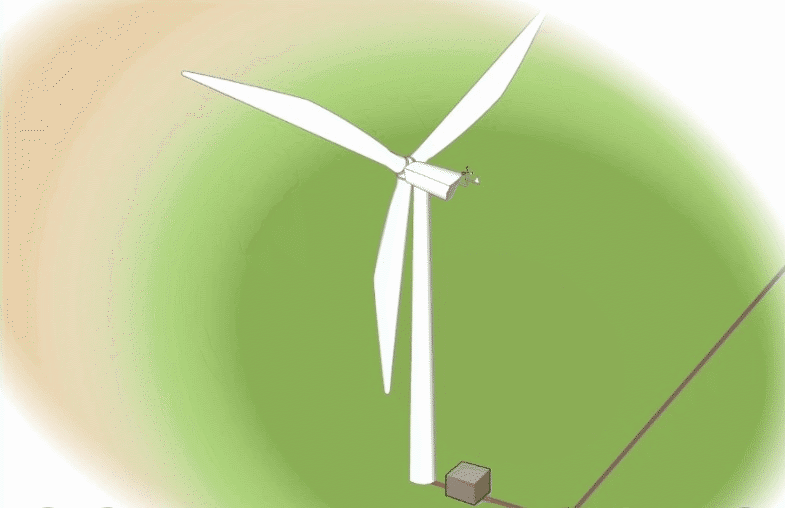Wind

This is what it is all about: wind. But where does it come from? It is probably not so well known that wind is actually a form of solar energy by the combination of:
- the sun heating up the atmosphere unevenly;
- the irregularities of the earth's surface; and
- the rotation of the earth.
From wind to energy
The animation here shows a wind turbine spinning in the wind (coming from the top left in the picture). The blades of the turbine function like the sail of a sailing boat and the wind forces them to move. Very often, the blades can be rotated to optimise the air flow around them (like trimming a sail in the wind).
The small cabin on top of the tower (called 'nacelle') hosts a generator where the rotation of the blades (more exactly: the shaft where the blades sit on) is converted into electrical energy. From the generator a cable runs down to the foot of the turbine and from there to the connection of the grid.

Source: U.S. Department of Energy

Source: U.S. Department of Energy
A close-up of the nacelle on top shows the rotating shaft entering the generator (the big block at the right end of the nacelle). In between is (optionally) a gear box which makes the rotation faster, a second shaft, breaks to stop it, and further equipment).
On top, you see a rotating anenometer (wind measurement device) with a wind vane, telling the system from which direction the wind comes and how much wind is measured at the time.
Small and mid-size wind

What is so specific about small and mid-size wind? Well, first and most importantly, the principle is not different. The key difference, however, is that smaller wind turbines are meant for decentralised energy.
This means that the energy is locally produced and consumed. A small wind turbine feeds its energy directly to the household where it is connected to, a mid-size wind turbine feeds a small company or a couple of households which are connected (e.g. as an energy community).
Another big difference is the height the turbines operate in. For large wind this is typically more than 100 m, for small wind below 15 m, and for mid-size wind it is often around 30 to 60 m. This height difference has mainly one effect: the wind speed is much lower at lower heights. In addition, the wind is often disturbed at these lower heights by obstacles.
Consequently, we have to be very careful in selecting the right height of the wind turbine and in addition, the right location. This process is key for estimating the power production for the selected site. We will therefore start with looking into the location selection process first ...
